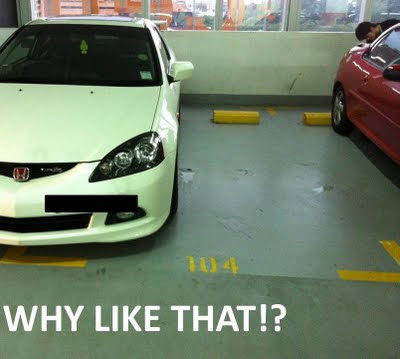I'll make an honest admission. Even though I've been playing guitar for over 12 years, I only started on analog pedals and amps this year. I've been relying on solid state for all of my tones, from my first 10W practice amp to my present Line 6 PODX3. Of course, it's not like I'm a complete newbie at it; I've gigged with all sorts of analog gear, courtesy of band mates who were kind (and rich) enough to lend me for the night.
Well, why the switch now?
In short, I got bitten by the analog bug. I must have been immune to it all those years when I wasn't earning an income and still a student on a budget. When payday comes, let me assure you, there's a great temptation to rush out and grab as many little metal boxes as your paycheck affords. In a short manner of 3 months, I acquired enough gear to completely fill up a Pedaltrain Pro (see below):
 |
| Justin's Pedalboard v2.0, 01Jul11 |
I've had an idea for what kind of tone I was going to commit to for a very long time, so that explains the apparent "shot-gun" style of acquiring my gear. I always liked warm, articulate and fat tones, particularly those in the style of Andy Timmons, Eric Johnson, Dave Weiner, and Ryo Owatari.
Was the switch easy? Not for me. Switching from multi-fx to analog pedals had the same feeling as switching from driving an automatic to a manual. There are so many other things to take note of which multi-fx settles for you, or completely removes for your convenience: the organization of the pedalboard, getting velcro to stick right, patching effects together, setting the volume of individual effects, choosing the right cables for the right pedal...
However, as highly convenient as digital processing offers, having total control over your signal chain is part of the allure of an analog pedalboard. If you're thinking of venturing into the realm of analog pedals, here are some tips I hope you'll find helpful:
- Be specific with your tone. What's the big picture of your tone? Can you describe it in words? By spelling your tone out (it doesn't have to be on paper), you're defining what you really want in your tone and can then make relevant choices. You'll know which pedals you won't need. Trust me, every pedal manufacturer out there will try to convince you that you need their pedal.
- Be realistic with your tone. This pertains to both your concept of tone and your budget for tone. You're not Eric Johnson/Joe Satriani/Steve Vai/(insert guitar hero here). No matter how close your rig is to your favorite guitar hero's, you won't sound like him because you're not him. The faster you assimilate this concept, the less you'll find yourself ogling over his ever-changing overhaul of guitars/pedals/amps. This leaves you more time and money to focus on your tone.
- Be content with your tone. You must eventually learn to draw the line to stop the purchases and concentrate on making your tone sound good. You made a plan, you stuck to it, you got what you wanted. Great! Now it's time to tweak less and practice more. Gear is only a means to an end, which is to make music.








